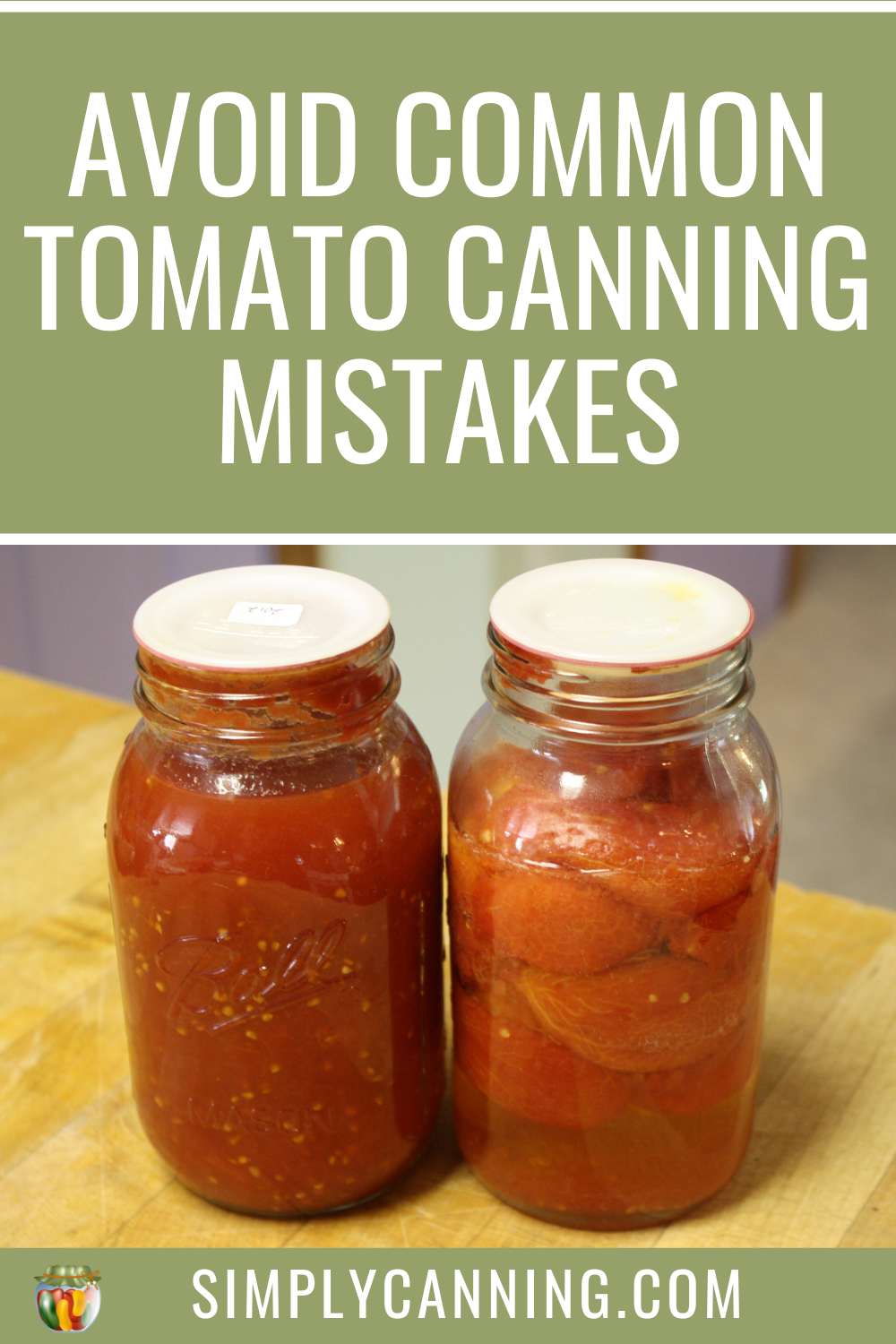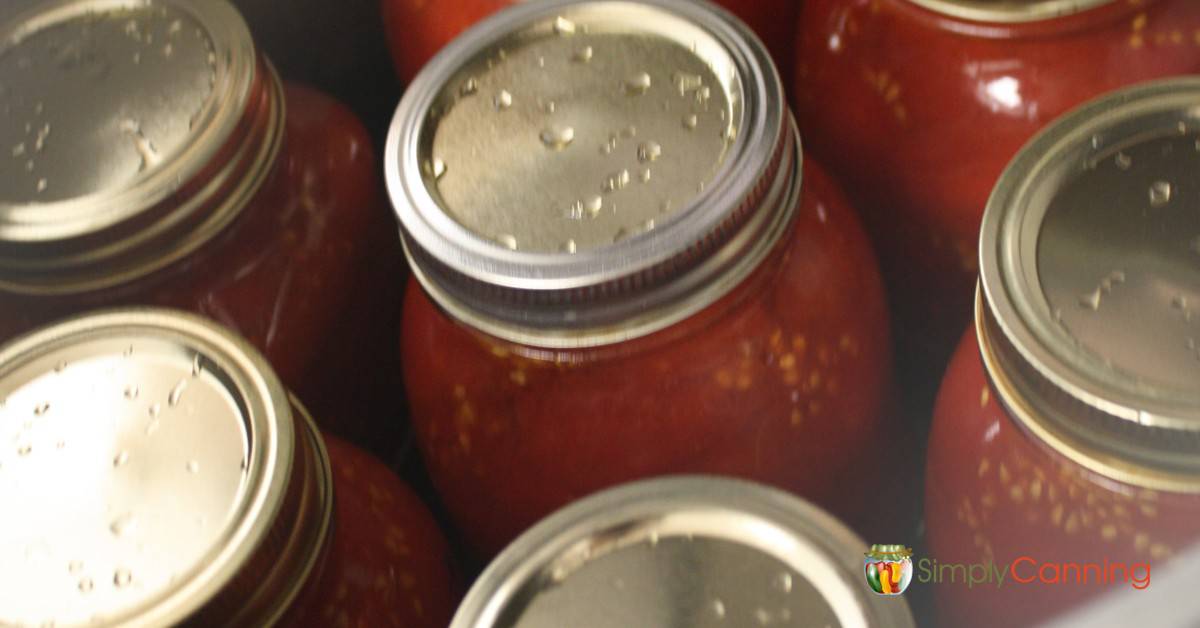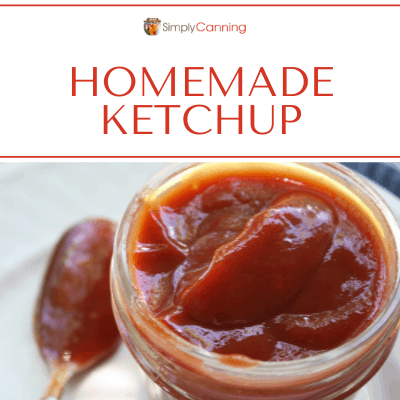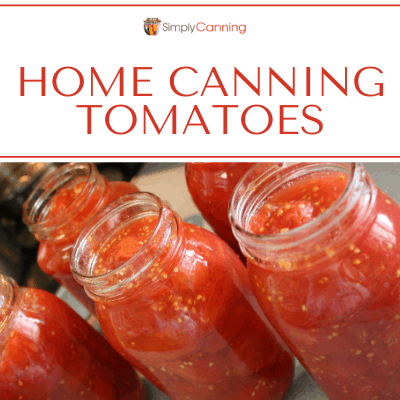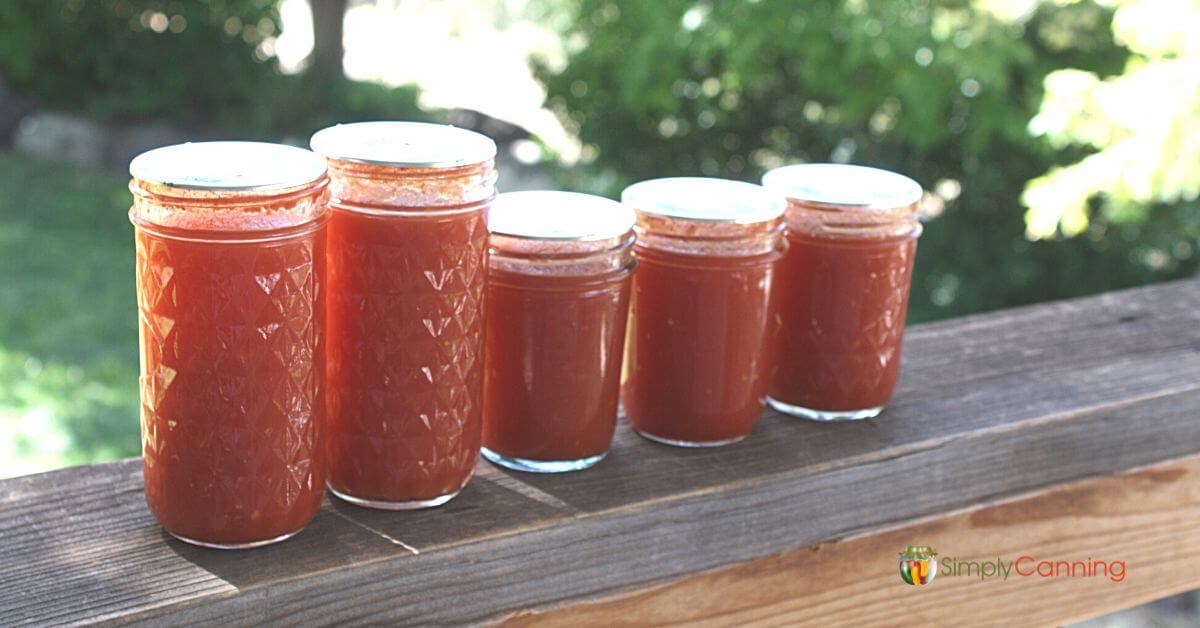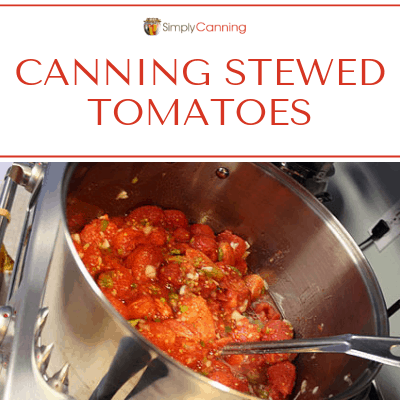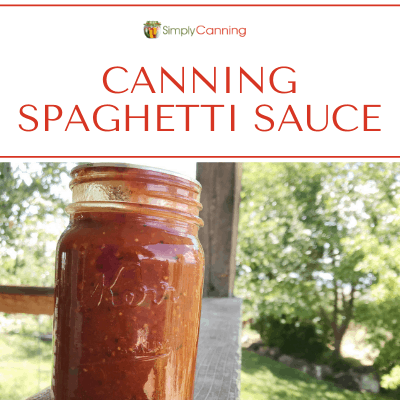Avoid Common Tomato Canning Issues
This page may contain affiliate links. More Information.
Learn How to Prevent Tomato Separation and Floating.
When a tomato canning projects goes awry. Discover the most common issues that can occur and how to avoid them. Practical solutions and tips.
- Avoid floating tomatoes
- Avoid tomato separation
- Avoid liquid loss
Ensure your canned tomatoes are perfectly preserved.
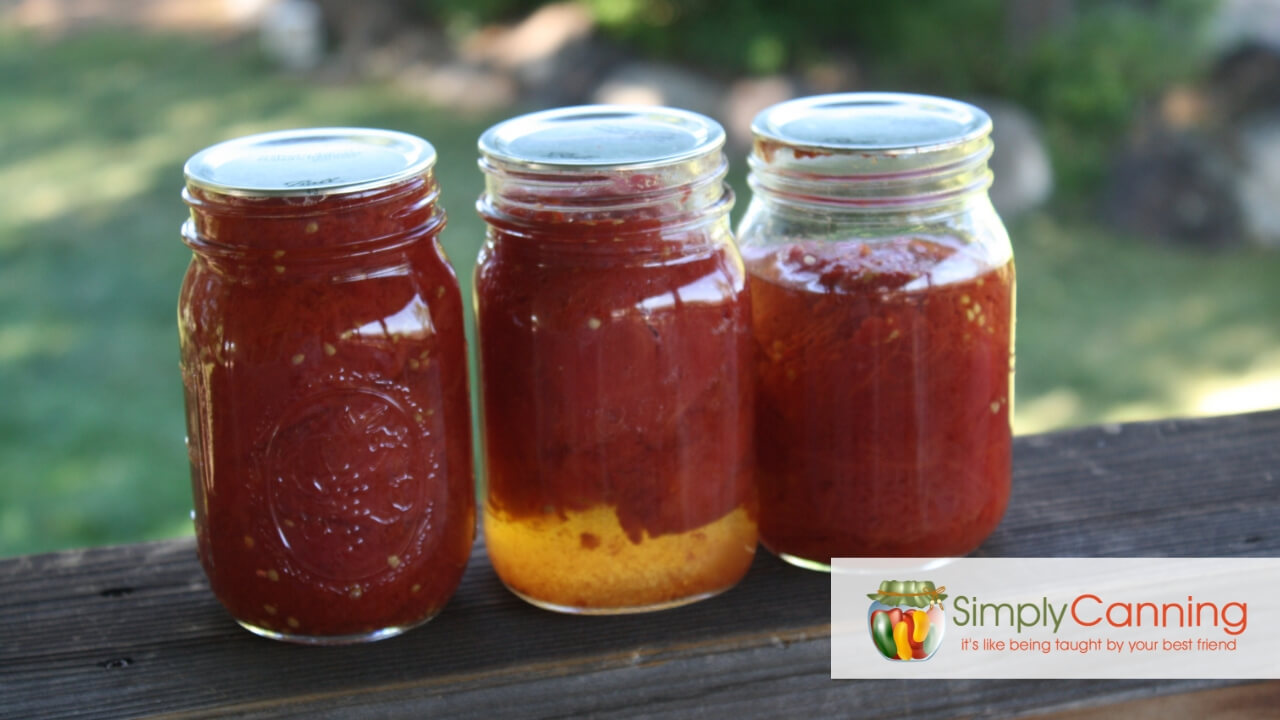
Tomatoes are one food that can be processed in either a water bath or a pressure canner. When you follow instructions be sure you are paying attention to which method is being used. Use the proper time and/or pressure and be sure and acidify those jars.
Why Do Tomatoes Separate After Canning?
Sometimes tomatoes will separate into layers when you are canning. This can happen with tomato juice, sauce or just plain canned tomatoes. It is the preparation and cooking method that has an effect on the separation.
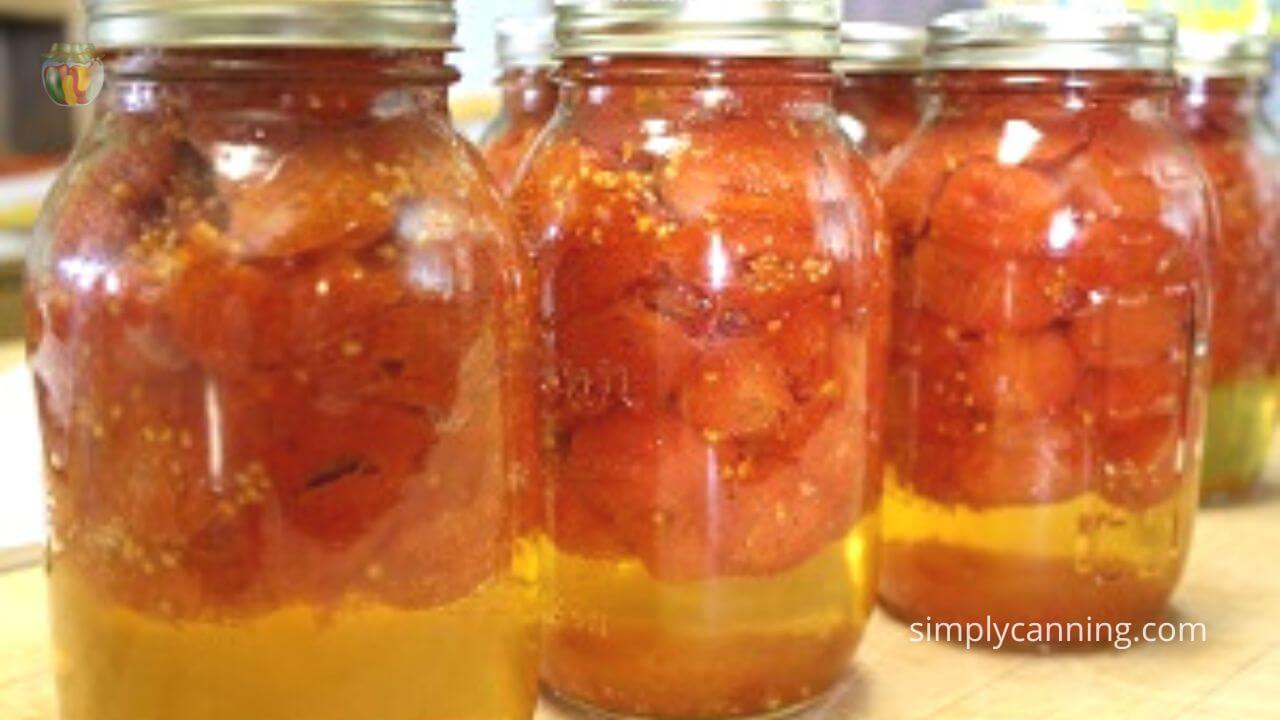
When tomatoes are cut or crushed before heating, there is an enzyme that is activated. These enzymes break down the natural pectin in the tomatoes.
Pectin? I always thought of that as a fruit thing? I never think of tomatoes as having pectin, but they do. Tomatoes are actually a fruit. Many people automatically think of them as a vegetable because they are not sweet like other fruit.
This enzyme breakdown causes the tomato solids to separate from the juices. You’ll end up with tomatoes floating, and a clear ‘tomato juice’ at the bottom of the jar.
When crushing or pureeing tomatoes for sauce or juice, this can happen with the tomato solids floating to the top, and a clear ‘tomato juice’ at the bottom.
This separation is not harmful or unsafe. It is just a cosmetic issue. The tomato layers will easily mix back together when you are ready to use it.
How to Keep Whole or Sliced Tomatoes From Floating.
Whole tomatoes can be packed in a hot pack method or a raw pack.
- Hot pack – food is cooked before packing in the jars.
- Raw pack – food is packed into the jars raw.
Both styles of packing the jars are processed either in a water bath, or a pressure canner.
In this image the jar on the right, is a raw pack. You can see the tomatoes hold their shape better, the jar on the left is a hot pack which is much more saucy.
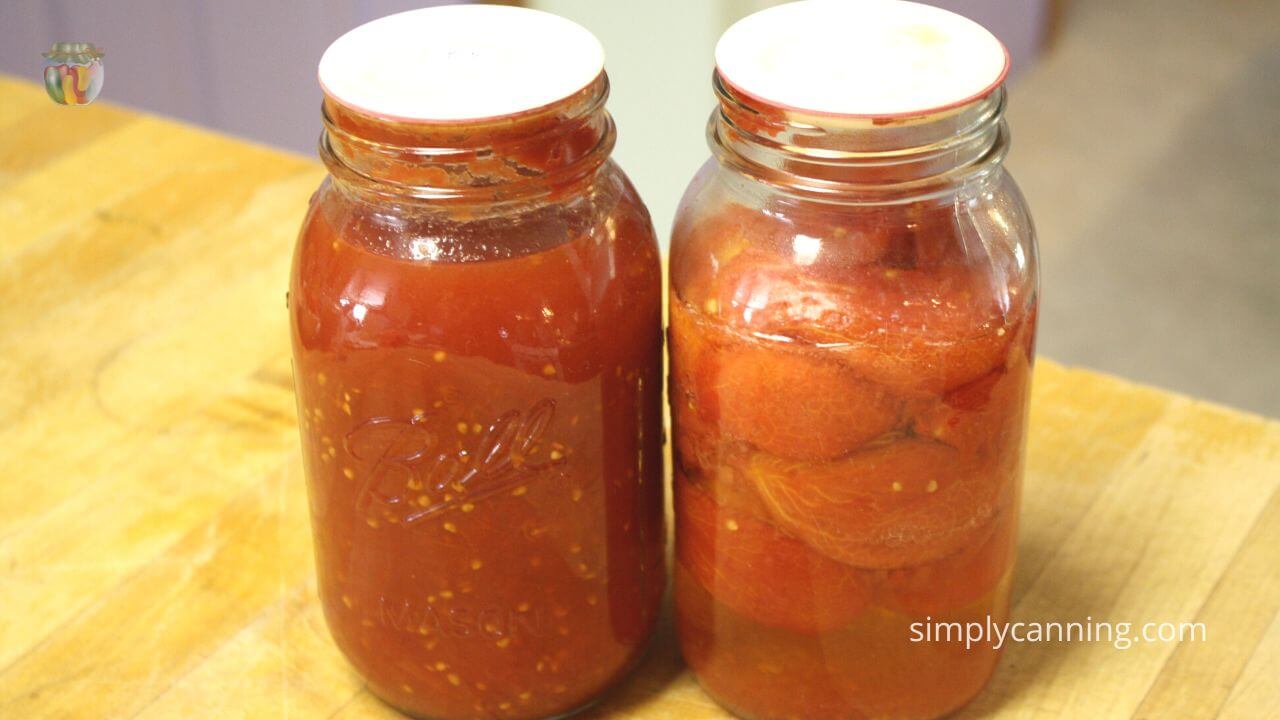
Raw pack tomatoes are more likely to float.
If you are canning plain tomatoes, whole or sliced, separation is more likely with a raw pack. It is just the nature of the method.
I want to clarify that raw pack does not mean that you don’t process the jars. Raw pack simply means you filled the jar without cooking or heating the tomatoes first. You will still process the jars in either a water bath or pressure canner.
With raw pack tomatoes separation is not always avoidable because you are not cooking the tomato first. It is normal for the tomatoes to float. They’ve got lots of air in the fruit and the enzyme action has not been halted as quickly as heating the tomatoes immediately upon cutting.
Remember the enzyme causing the separation is stopped when the tomatoes are heated. You don’t heat the tomatoes first when you raw pack.
You can minimize separation by packing the jars with as much tomato as possible. Use fresh firm tomatoes and press them a bit to release their own juice and fill the jar.
Prevent tomato separation by using a hot pack.
You can use a hot pack instead. A hot pack simply means you heat the tomatoes before putting them in the jars. This will reduce separation because the tomatoes are cooked first. But then your tomatoes will be very soft (sauce like) when you open the jar. Not a bad thing, but just different. It depends on what you want for your final result.
Personally, I just go for the hot pack. Raw packed tomatoes are not much different than hot pack. It’s not like taking a tomato out and slicing it for your salad.
Stewed tomatoes is a recipe that is a hot pack. I’ve never had it separate in the jars.
Raw pack tomatoes in its own juice. No water added.
There are some canning recipes that call for adding water to your jars of tomatoes. These are perfectly safe tested methods that use water, but if you want to avoid floating tomatoes, don’t use these directions. The extra water makes it more likely the tomatoes will float.
Instead, use the canning recipes that are raw pack and just tomatoes in their own juice.
You will add your tomatoes to the jars and press down a bit to fill the jar with the natural juices of the tomatoes. Raw pack simply means the tomatoes are put in the jar raw and uncooked.
Note – Adding water changes the ph and has different processing time than tomatoes in their own juice. Be sure of your processing time on the method you choose. I recommend just tomatoes and natural juices.
How to Keep Tomato Juice or Sauce From Separating.
Tomato juice or sauce is also likely to separate if you don’t heat it first. It will all be liquid, no tomato pieces but the bottom will be clear. I call it “tomato broth”.
The trick to preventing this is how you cook your juice or tomato sauce. If you heat the tomatoes immediately after cutting or crushing separation will be minimized.
This method works for tomato vegetable juice as well.
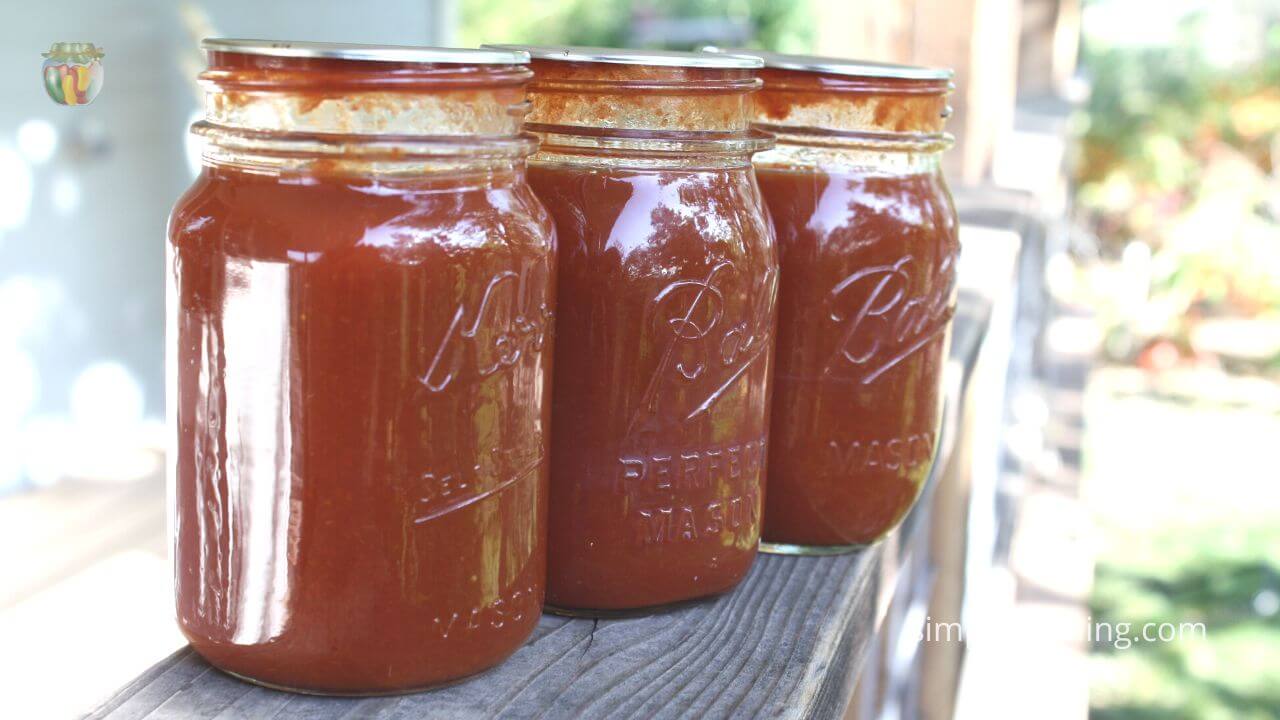
It’s all in how you cook it.
Wash and trim any bruised or damaged spots on your tomatoes. Cut some of the tomatoes into quarters. Add a layer of tomatoes to your sauce pan and bring to a boil. Smash these tomatoes to help the juices start flowing.
When that first layer of tomatoes has come to a boil, cut up the rest of the tomatoes and add them to the pot gradually. Don’t add too quickly. Keep the pot boiling as you work.
As the tomatoes heat, the enzyme action will be halted and you’ll reduce the separation in your canning recipe later.
Some Other Causes of Tomato Separation.
Overripe fruit may tend to separate more easily. Pectin starts to break down naturally as the fruit goes overripe. You want to use ripe but not overripe tomatoes.
Processing too long may cause your tomatoes to separate.
Processing longer than you need to can cause separation. I say this hesitantly because I don’t want you to use this as an excuse to cut your processing time shorter. Use a tested recipe as written. No need to process longer, but don’t cut the time short either.
Processing at too high a temperatures might cause separation.
Processing at too high a temperature might also cause separation issues in your home canned tomatoes. And just like the previous comment, don’t use this as an excuse to use a weight lower than is recommended. Home canning must be done correctly. Just make your best effort to keep your pressure canner at the proper level. If it is a water bath recipe just follow the directions as written. (assuming you have tested directions)
Liquid Loss in Tomatoes is a Bummer.
Liquid loss is another problem that some people run into. When this happens you lose liquid in your jars and end up with only a half a jar of tomatoes. Liquid is pushed out through the seals while processing. What happened?
Liquid loss is unfortunate but not always unsafe. If the loss is mild then your jars are still fine for storage. If however it is extreme (defined as more than half the jar is lost) then the jars should be stored in the refrigerator and used up soon.
There are three common reasons that liquid loss happens but there are many possibilities.
- You removed your jars too quickly from the canner after processing. You need to allow those jars to gradually reduce heat and pressure. This is more common for pressure canning.
- You allowed pressure to fluctuate in your canner during processing. Temperature or pressure going up and down a lot will cause pressure fluctuation in the jars themselves and can push liquid under the lids and out of the jars.
- You are raw packing your tomatoes. Similar to separation, liquid loss just tends to happen more with a raw pack.
I’ve got more detail on losing liquid in your jars for all types of canning on this post. This is not just a tomatoes issue. It can happen with any foods. More common with the pressure canner but a water bath project can also occasionally have this issue.
A List of All Tomato Canning Recipes.
All our tomato recipes can be found on this page. We’ve got raw pack, tomato sauce, spaghetti sauce, stewed tomatoes, ketchup and more…
Frequently Asked Questions
No, it is not unsafe. The separation is just cosmetic. There is no safety issue. After the jars have cooled completely, you can turn the jar over to mix in the juices again if you want. It will likely just separate again as it settles.
Yes you can shake the jar to remix the contents and remove the separation. Turning the jar over is usually enough to do this. Keep in mind the contents will likely separate again as it settles.
Liquid loss is a different issue and can happen with tomatoes and other types of food as well. I’ve got a post here on some of the causes.
Resources:
https://extension.umn.edu/preserving-and-preparing/food-preservation-and-canning-troubleshooting-guide#fruit-or-tomatoes-float-or-separate-from-liquid-110464
Some Other Tomato Canning Articles
Pin this to find later!
